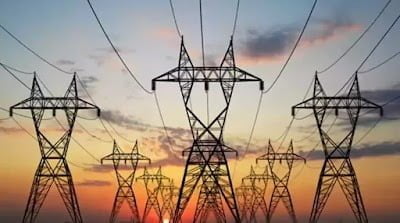THE 300MW Hwange Thermal Power Station Unit 7 would be back online in the next three weeks while negotiations are underway to increase electricity imports and speed up rehabilitation of the aging units at the thermal plants to boost supplies and bring to an end the ongoing load-shedding regime.
Energy and Power Development Minister, Cde Edgar Moyo, said this yesterday during a tour of the Hwange Power Station in Matabeleland North province where he assured stakeholders that swift measures were being taken to restore normal power supplies and support key economic sectors.
He said the power cuts being experienced across the country have been caused by reduced domestic power generation due to low water levels at Lake Kariba, which has severely crippled hydro-power production, as well as the switching off of Hwange Thermal Power Station Unit 7 for maintenance purposes.
To ensure long-term supply stability, the Government is pushing for the retooling of aging units 1 to 6 at Hwange Power Station and rolling out new technologies, which include introducing a floating solar system at Lake Kariba and bringing on stream several independent renewable power producers.
The country’s electricity generation dropped to about 1 300MW recently against a demand of 1 800MW following the scheduled switching off of Unit 7 for Class C maintenance and reduced capacity at Kariba Hydro-power Station, which is now producing an average of 300MW.
This has left the country largely dependent on Hwange Power Station and imports from regional producers.
“There is a need to deploy new technology for units 1 to 6 and our capacity to generate will be increased and we will be able to supply sufficient power to the nation,” said Minister Moyo during the tour.
“We are doing about 1 300MW against a peak demand of 1 850MW. So, we are having that deficit, which has been occasioned by the outage of Unit 7, and to mitigate that some imports are being experienced.
“Very soon in about two to three weeks one unit is going to come back to service and that is going to reduce our power deficit, and we should see an improvement in the power supply going into the end of this month although intermittently we should expect breakdowns.”
Zesa executive chairman, Dr Sydney Gata, who accompanied Minister Moyo said the adoption of new technology was imperative in boosting power generation efficiency and improving service delivery.
“From the onset, I need to emphasise a fundamental parameter that has affected power supply in Zimbabwe more than any other factor. It is the fact that our biggest power station Kariba, rated at 1 050MW, producing the cheapest and most reliable capacity has run short of water to such an extent that we are running on an average of 300MW against 1 050MW capacity and so effectively we lost 750MW,” he said.
“If we don’t realise this, we may not appreciate the circumstances that we are under. There are moves now to accelerate alternative technology, principally PV solar and there is a lot of investment waiting in the pipeline.
“I am pleased to say measures recently taken by the minister are beginning to release that capacity so progressively load shedding will come to an end forever because we have limitless solar in the country,” said Dr Gata. Chronicle










